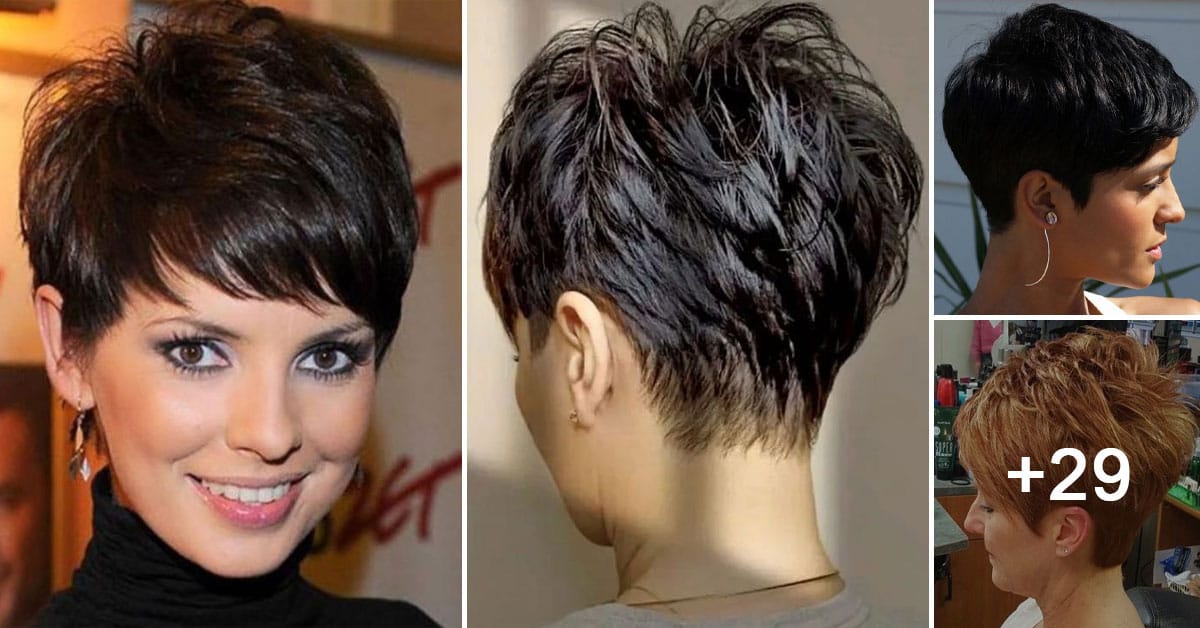Pixie haircuts have consistently held a place of honor as one of the most iconic and adaptable hairstyles in the fashion and beauty industry. These short, stylish cuts, known for their tapered sides and back with longer, styled top layers, have graced numerous celebrities and style icons. What gives pixie haircuts their lasting appeal? This article delves into the intriguing realm of pixie haircuts, exploring their evolution, enduring charm, and why they remain a go-to for those seeking a dramatic and fashionable change.
A Brief History of Pixie Haircuts:
The term “pixie haircut” emerged in the 1950s, swiftly gaining popularity, particularly through Audrey Hepburn’s pioneering look in “Roman Holiday.” This style marked a shift from the prevalent long hairstyles of that era, symbolizing independence and confidence. The 1960s further solidified the pixie’s status, with icons like Mia Farrow and Twiggy making it a staple of fashion history.
The Versatility of Pixie Haircuts:
Pixie haircuts stand out for their versatility. Despite their simple design, pixies can be tailored to fit various face shapes, hair textures, and personal tastes, offering numerous customization options. They can add volume to fine hair or streamline thick, unruly hair. Whether curly or straight, pixie cuts can accommodate any hair type, and their adaptability extends to styling the top layers, from short bangs to creative asymmetrical cuts.
Face Shape and Pixie Cuts:
Choosing the right pixie cut depends on your face shape, as certain styles enhance different facial features:
- Oval Face: Almost any pixie works well, including classic cuts, asymmetrical versions, or layered styles.
- Round Face: Opt for a pixie that adds top volume and textured sides to elongate the face.
- Square Face: A textured pixie softens angular features with layers and side-swept bangs.
- Heart-Shaped Face: A pixie with a longer fringe or side-swept bangs balances the forehead and chin.
- Diamond Face: A voluminous crown and side-swept bangs highlight the best features of diamond-shaped faces.
Pixie Cuts Through the Decades:
Pixie cuts have adapted over the decades, each era adding its flair. The 1970s featured feathered bangs and a carefree look, while the 1980s experimented with bold colors and asymmetrical designs. The 1990s preferred simple, minimalist pixies. In the 2000s, celebrities like Halle Berry and Charlize Theron embraced pixies, reinforcing their timeless appeal.
Maintaining a Pixie Cut:
Pixies are relatively low-maintenance but require regular trims to maintain their sharp look, typically every 4-6 weeks. Styling products like texturizing creams and pomades allow for varied styles, from sleek to tousled.
Conclusion:
Since Audrey Hepburn’s debut, pixie haircuts have evolved into a versatile, enduring choice for women of all ages. They offer a blend of individuality and confidence that withstands fleeting trends. Whether you’re looking for a radical change or are drawn to the pixie cut’s charm, it’s clear that this hairstyle continues to make a bold statement about confidence and style.
Explore these 32 captivating pixie haircuts to find your ideal style, and embrace your inner style icon.

